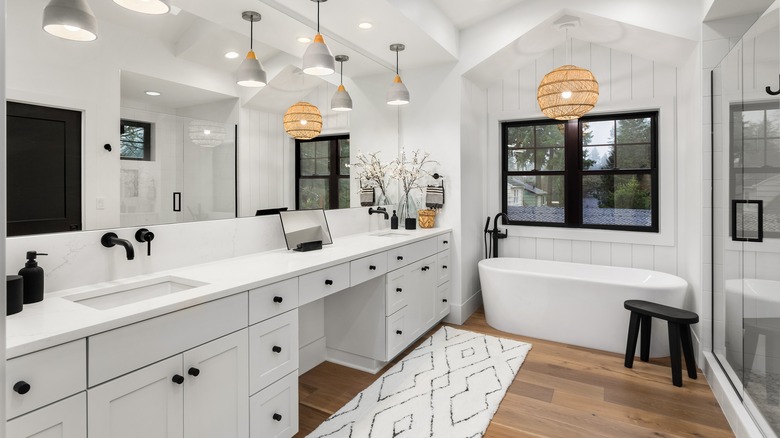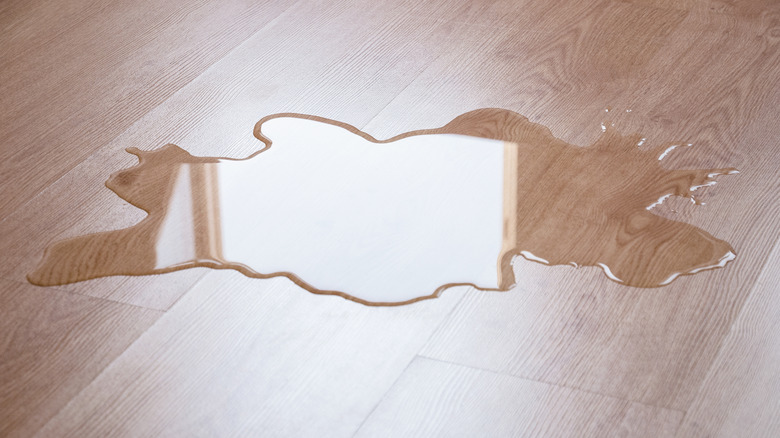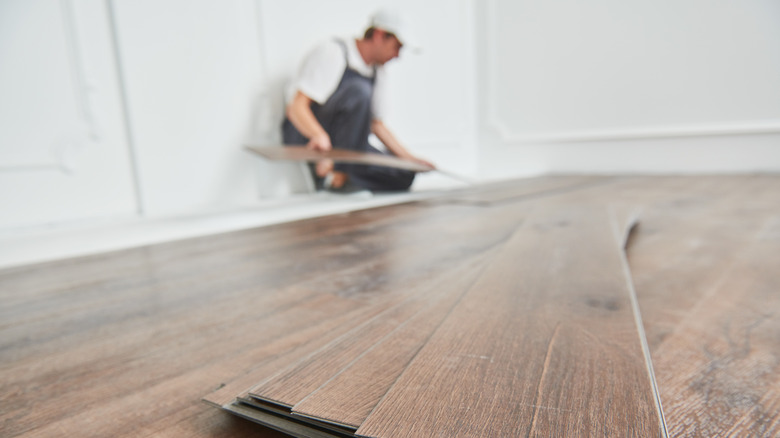Should You Avoid Wood Flooring In Your Bathroom?
Hardwood is a popular choice for many homeowners looking to upgrade their flooring. It's attractive, inviting, and can add value to your home; Money.com estimates that wood floors can increase the selling price of a property by 3 to 5%. Wood floors bring a sense of coziness and comfort that tile or vinyl just can't provide. Plus, they're easy to keep clean, and with all the different types of wood available, you can choose from a wide range of colors, styles, and finishes to match your unique taste.
However, there are some risks associated with installing wood in areas with high humidity levels that you should consider before making a final decision. Wood flooring is beautiful and can add a lot of charm to a space, but it's highly sensitive to moisture, which makes it an unsuitable choice for damp areas such as bathrooms. Additionally, wood floors require regular refinishing in order to maintain their original appearance due to wear and tear caused by foot traffic and spills. This means additional costs down the line for maintenance or repairs. Even though wood flooring may not be the best choice for bathrooms, there are other similar looking materials that are better suited for this particular area.
Why wood flooring shouldn't be used in bathrooms
Wood is porous, meaning it absorbs moisture from the air and environment. This means that when exposed to water or humidity, boards can swell and warp over time. Warping occurs when excessive moisture gets underneath the surface and causes the wood to swell, resulting in uneven planks or buckling. This kind of damage to the floorboards will eventually require costly repairs or replacement. Sensitivity to moisture is the primary reason why experts recommend against wood flooring for bathrooms, according to Floor Factors, because wood floors are also prone to mold and mildew growth when installed in warm, humid environments. While there are treatments available to protect against mold growth, those products come with their own set of drawbacks, namely the cost and labor involved with regular maintenance and upkeep.
If you do opt for wood floors in a bathroom, keep in mind that wood expands when exposed to water, so it's important to keep it treated with an appropriate sealant or waterproof finish to avoid damage. Also, keep an eye out for any standing water that may pool around sinks or showers, and make sure you mop it up quickly so that it doesn't seep into the floor.
Alternative bathroom flooring options
Luckily, there are plenty of options available these days that will give you the look of traditional hardwood without any worries about warping or water damage. Vinyl plank flooring is one of the most popular alternatives to hardwood floors in bathrooms. According to Diverse Flooring, this type of product is made from polyvinyl chloride (PVC) and comes in a wide variety of colors and styles that mimic hardwood floors. The great thing about PVC flooring is that it's waterproof and incredibly durable, making it perfect for rooms where moisture is present. It also costs a fraction of the price when compared to real hardwood floors, so it's often an affordable choice for those on a budget.
If you want another practical yet stylish option, porcelain tiles are an excellent choice. They come in a wide variety of colors and styles, including ones that resemble real wood planks, which is perfect if you want something with a classic look but don't want to worry about maintaining real wood floors. Porcelain tiles are equally durable and waterproof, so they won't be easily damaged by water or humidity like other types of flooring materials. The downside is that they can be quite expensive compared to options like vinyl or laminate, so they won't be suitable for everyone.


